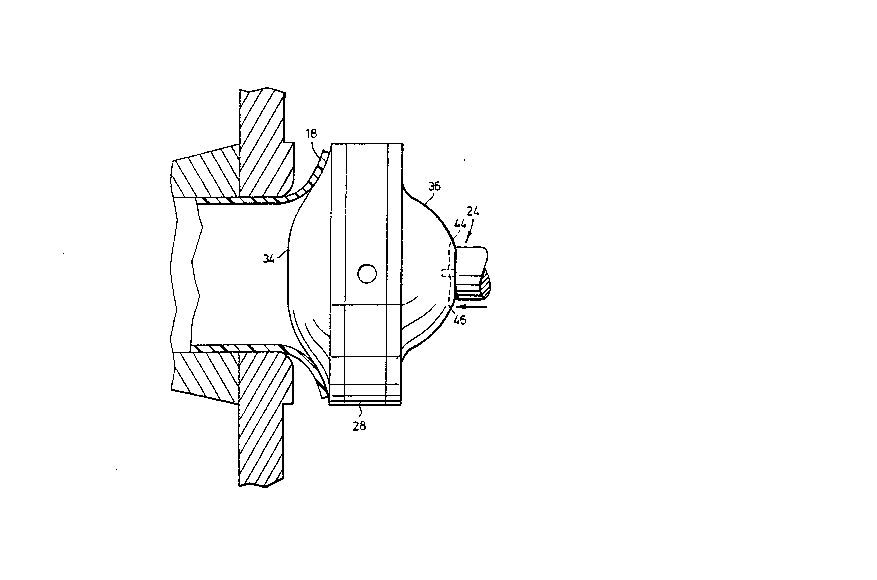Some of the information on this Web page has been provided by external sources. The Government of Canada is not responsible for the accuracy, reliability or currency of the information supplied by external sources. Users wishing to rely upon this information should consult directly with the source of the information. Content provided by external sources is not subject to official languages, privacy and accessibility requirements.
Any discrepancies in the text and image of the Claims and Abstract are due to differing posting times. Text of the Claims and Abstract are posted:
| (12) Patent Application: | (11) CA 2015096 |
|---|---|
| (54) English Title: | METHOD AND APPARATUS FOR FLARING PIPE LINER |
| (54) French Title: | METHODE ET DISPOSITIF D'EVASEMENT DES GAINES DE PROTECTION |
| Status: | Deemed Abandoned and Beyond the Period of Reinstatement - Pending Response to Notice of Disregarded Communication |
| (51) International Patent Classification (IPC): |
|
|---|---|
| (72) Inventors : |
|
| (73) Owners : |
|
| (71) Applicants : |
|
| (74) Agent: | DIMOCK STRATTON LLP |
| (74) Associate agent: | |
| (45) Issued: | |
| (22) Filed Date: | 1990-04-20 |
| (41) Open to Public Inspection: | 1991-10-20 |
| Examination requested: | 1997-04-18 |
| Availability of licence: | N/A |
| Dedicated to the Public: | N/A |
| (25) Language of filing: | English |
| Patent Cooperation Treaty (PCT): | No |
|---|
| (30) Application Priority Data: | ||||||
|---|---|---|---|---|---|---|
|
ABSTRACT
Method and Apparatus for Flaring
Pipe Liners
An apparatus for flaring the end of a
thermoplastic liner installed in a metal pipe. The
end extends beyond the pipe and the pipe having at
least one flange mounted thereon. The apparatus
comprises a first forming head having a liner
contacting surface disposed at an acute angle
relative to said liner, said surface being adapted
to be pushed against said end to cause said end to
flare outwardly about an acute angle and a second
forming head having a liner contacting surface being
disposed at an angle of at least ninety degrees
relative to said liner. The second forming head
being adapted to be pushed against said end to cause
said end to bend into contact with said flange.
Note: Claims are shown in the official language in which they were submitted.
Note: Descriptions are shown in the official language in which they were submitted.

2024-08-01:As part of the Next Generation Patents (NGP) transition, the Canadian Patents Database (CPD) now contains a more detailed Event History, which replicates the Event Log of our new back-office solution.
Please note that "Inactive:" events refers to events no longer in use in our new back-office solution.
For a clearer understanding of the status of the application/patent presented on this page, the site Disclaimer , as well as the definitions for Patent , Event History , Maintenance Fee and Payment History should be consulted.
| Description | Date |
|---|---|
| Inactive: IPC from MCD | 2006-03-11 |
| Application Not Reinstated by Deadline | 2001-04-20 |
| Time Limit for Reversal Expired | 2001-04-20 |
| Deemed Abandoned - Conditions for Grant Determined Not Compliant | 2000-05-23 |
| Deemed Abandoned - Failure to Respond to Maintenance Fee Notice | 2000-04-20 |
| Notice of Allowance is Issued | 1999-11-22 |
| Letter Sent | 1999-11-22 |
| Notice of Allowance is Issued | 1999-11-22 |
| Inactive: Approved for allowance (AFA) | 1999-10-06 |
| Revocation of Agent Requirements Determined Compliant | 1999-03-11 |
| Appointment of Agent Requirements Determined Compliant | 1999-03-11 |
| Revocation of Agent Request | 1999-01-27 |
| Appointment of Agent Request | 1999-01-27 |
| Appointment of Agent Request | 1999-01-22 |
| Revocation of Agent Request | 1999-01-22 |
| Revocation of Agent Request | 1998-12-08 |
| Appointment of Agent Request | 1998-12-08 |
| Inactive: Delete abandonment | 1997-12-08 |
| Letter Sent | 1997-12-08 |
| Inactive: Status info is complete as of Log entry date | 1997-12-08 |
| Inactive: Application prosecuted on TS as of Log entry date | 1997-12-08 |
| Inactive: Office letter | 1997-07-18 |
| Inactive: Office letter | 1997-07-18 |
| Reinstatement Requirements Deemed Compliant for All Abandonment Reasons | 1997-06-17 |
| Inactive: Abandon-RFE+Late fee unpaid-Correspondence sent | 1997-04-21 |
| Deemed Abandoned - Failure to Respond to Maintenance Fee Notice | 1997-04-21 |
| All Requirements for Examination Determined Compliant | 1997-04-18 |
| Request for Examination Requirements Determined Compliant | 1997-04-18 |
| Application Published (Open to Public Inspection) | 1991-10-20 |
| Abandonment Date | Reason | Reinstatement Date |
|---|---|---|
| 2000-05-23 | ||
| 2000-04-20 | ||
| 1997-04-21 |
The last payment was received on 1999-04-01
Note : If the full payment has not been received on or before the date indicated, a further fee may be required which may be one of the following
Please refer to the CIPO Patent Fees web page to see all current fee amounts.
| Fee Type | Anniversary Year | Due Date | Paid Date |
|---|---|---|---|
| Request for examination - standard | 1997-04-18 | ||
| MF (application, 7th anniv.) - standard | 07 | 1997-04-21 | 1997-06-17 |
| Reinstatement | 1997-06-17 | ||
| MF (application, 8th anniv.) - standard | 08 | 1998-04-20 | 1998-03-10 |
| MF (application, 9th anniv.) - standard | 09 | 1999-04-20 | 1999-04-01 |
Note: Records showing the ownership history in alphabetical order.
| Current Owners on Record |
|---|
| DU PONT CANADA INC. |
| Past Owners on Record |
|---|
| JAMES RODERICK DARLING |